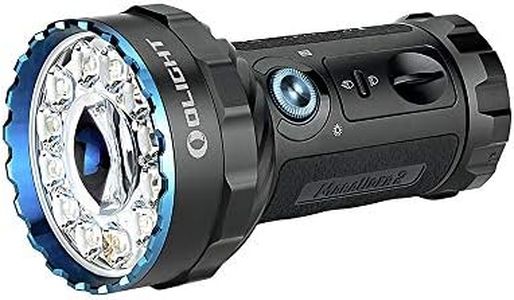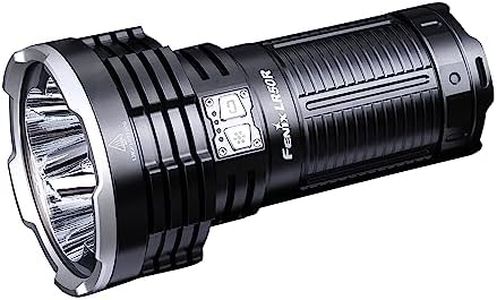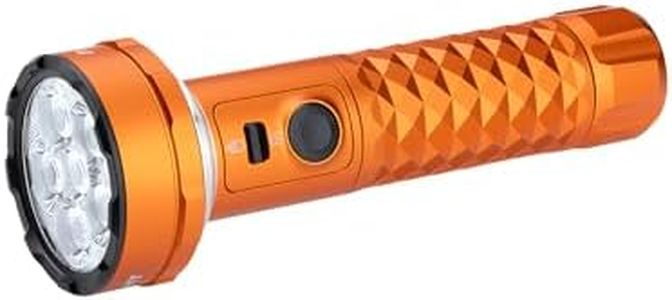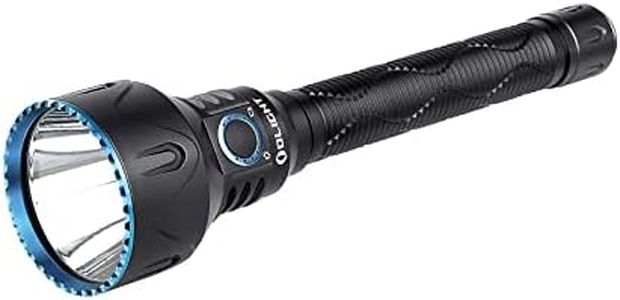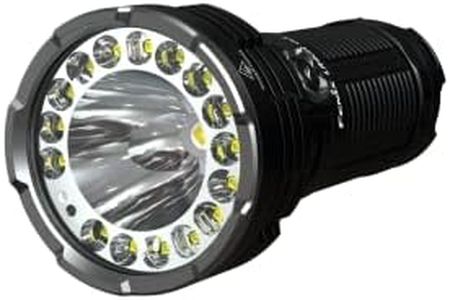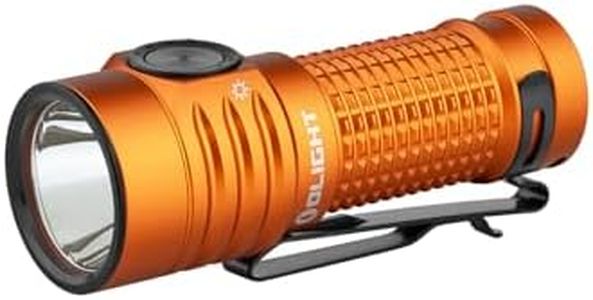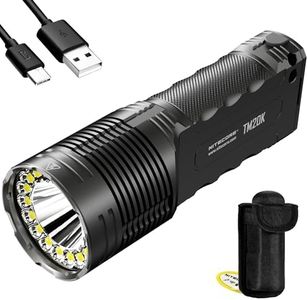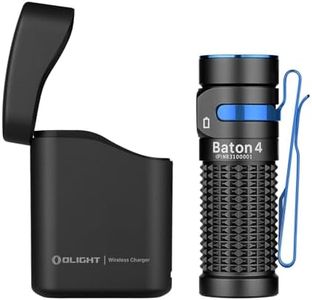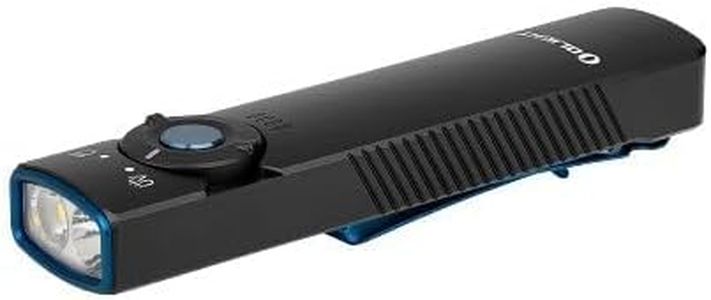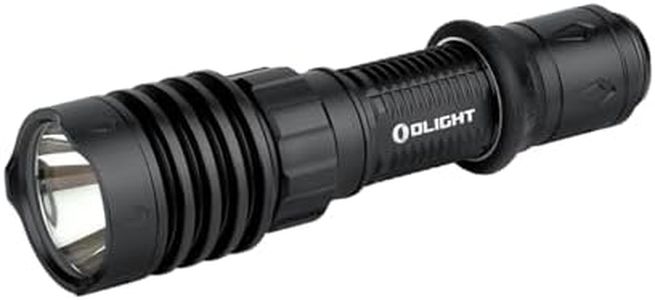We Use CookiesWe use cookies to enhance the security, performance,
functionality and for analytical and promotional activities. By continuing to browse this site you
are agreeing to our privacy policy
10 Best Handheld Spotlights
From leading brands and best sellers available on the web.Buying Guide for the Best Handheld Spotlights
Choosing a handheld spotlight can seem overwhelming with all the options available, but a little know-how can make it much easier. Start by thinking about where and how you plan to use the spotlight—will it be for camping, searching for animals, emergencies, or general outdoor use? It helps to have a sense of what environments you'll use it in and how long you typically need it to run. Knowing exactly what you want to do will guide you toward the features that matter most. Always check for comfort in handling and ease of use since a handheld spotlight should feel good in your hand and be simple to operate.Brightness (Lumens)Brightness, measured in lumens, tells you how much light the spotlight emits. The higher the lumens, the brighter the beam. For activities like close-up work or small indoor spaces, a lower lumen spotlight (around 500-1000 lumens) is usually enough. For outdoor searching or seeing long distances, a more powerful unit (2000+ lumens) offers better performance. Decide based on how far you need to see: choose higher lumens for wide, open areas and lower for simple tasks or close-range work.
Beam DistanceBeam distance tells you how far the light will reach before it fades away. A longer beam distance is important for search and rescue, boating, or outdoor adventures in wide-open areas. For general household or campsite use, a shorter beam may be sufficient. If you need to spot objects at a great distance, look for a spotlight that specifies a long throw or beam range—often measured in meters or feet.
Battery LifeBattery life indicates how long the spotlight will run on a full charge or fresh set of batteries. Spotlights with longer battery life are necessary for extended outdoor activities or emergencies when recharging or replacing batteries isn't practical. For occasional or short-term use, a shorter battery life might be acceptable. Pick based on your typical duration of use: longer for overnight or extended trips, and shorter for quick tasks.
Power SourceHandheld spotlights are powered either by disposable batteries, rechargeable batteries, or direct plug-in power. Rechargeable spotlights are eco-friendly and cost less over time, while disposables are good if you want quick swaps and don’t have access to electricity for charging. Choose rechargeable for regular use, or disposables if you'll be away from power for long stretches.
Weight and SizeWeight and size matter for comfort, especially if you’ll be holding the spotlight for long periods or packing it for hikes. Lighter and more compact models are best for portability but may sacrifice some brightness or battery life. Large spotlights typically offer more power but can be tiring to hold. Match the size to your stamina and where you’ll carry it—choose lighter if you’re on the move, heavier if you value higher performance and will set it down often.
Durability and Water ResistanceDurability refers to how tough the spotlight is and how well it stands up to drops, hits, or tough weather. Water resistance, often shown by an IP (Ingress Protection) rating, tells you how well it stands up to rain or splashes. For outdoor or heavy-duty use, prioritize rugged, water-resistant designs so your spotlight can handle rough conditions. For indoor or light use, basic durability is usually enough.
Modes and FeaturesSome spotlights come with extra modes like adjustable brightness, flashing SOS, or red filters. Modes can make your spotlight more versatile for signaling, saving power, or providing just the right amount of light. If you expect varied uses—like emergencies, camping, and general chores—more modes are helpful. If you just want simplicity, basic on/off functions should be sufficient.
